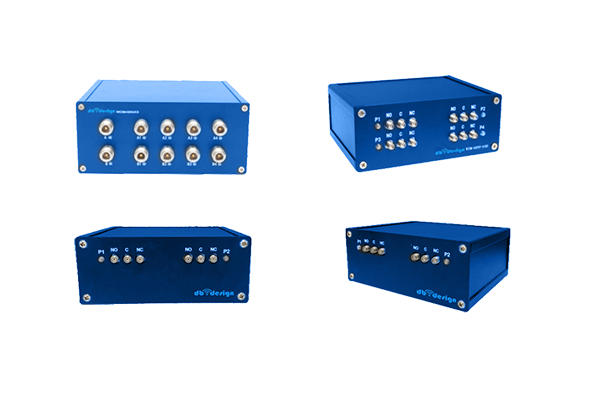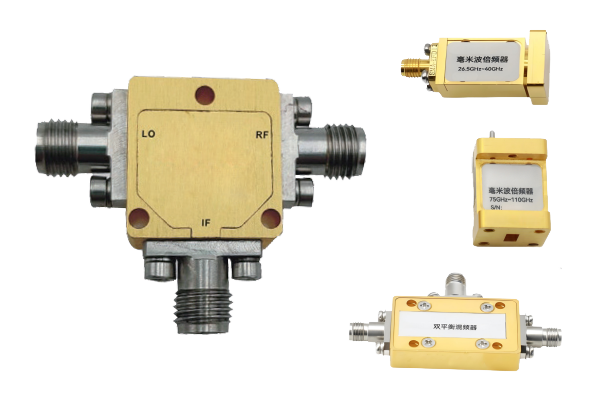monitoring-enabled testbench-proven site-prepared PIN diode routing component for satellite links

Pin diodes are established as major constituents in high-frequency electronics due to their natural device characteristics Their ability to operate with fast state changes and low capacitance while maintaining minimal insertion loss fits them to switching modulation and attenuation tasks. The main mechanism of PIN diode switching uses bias voltages to regulate copyright flow through the device. Applying bias shifts the depletion-region extent within the p–n junction and so modifies conductivity. Setting different bias levels allows PIN diodes to perform high-frequency switching with minimal distortion
PIN diodes find placement inside complex circuit frameworks when precise timing and control is required They are implemented in RF filtering schemes to enable selective frequency band passage or blockage. Their high-power endurance makes them appropriate for amplifier power dividing and signal generation functions. Advances producing smaller and efficient PIN diodes have widened their roles in modern wireless and radar applications
Evaluating Coaxial Switch Design and Functionality
Coaxial switch design is a sophisticated process involving many important design considerations Switch performance is contingent on the kind of switch operational frequency and its insertion loss attributes. Coaxial switch optimization emphasizes low insertion loss combined with high interport isolation
Performance studies concentrate on return loss insertion loss and isolation measurements. Performance figures are derived from simulation modeling theoretical analysis and empirical testing. Reliable operation of coaxial switches demands thorough and accurate performance analysis
- Simulation, analytical modeling and experimental testing are widely utilized to examine coaxial switch designs
- Factors such as temperature variations impedance mismatch and fabrication tolerances can impact switch behavior
- Innovative trends and recent advances in switch design emphasize metric improvements while lowering size and consumption
Design Strategies for Low Noise Amplifiers
Optimization of LNA gain efficiency and overall performance is critical to achieve excellent signal preservation Achieving results demands careful transistor picks optimized bias settings and considered topology design. A resilient LNA architecture aims to lower noise generation and raise gain while keeping distortion low. Modeling and simulation tools enable assessment of how transistor choices and biasing alter noise performance. The objective is achieving a low Noise Figure which measures the amplifier’s ability to preserve signal strength while suppressing internal noise
- Choosing transistors with inherently low noise characteristics is critically important
- Adopting proper optimal biasing is essential to reduce noise creation in devices
- Circuit layout and topology have substantial impact on noise characteristics
Techniques like impedance matching noise cancellation and feedback control can further elevate LNA performance
Signal Switching Using Pin Diodes

Pin diode based switches enable adaptable and effective RF signal routing in various use cases The semiconducting switches operate at high speed to provide dynamic control over signal paths. Their minimal insertion loss and robust isolation characteristics prevent significant signal degradation. They find use in antenna selection systems duplexers and phased array antennas
Operation relies on changing the device resistance via applied control voltage to switch paths. In the open or deactivated condition the device offers large resistance that prevents signal passage. A controlled forward voltage lowers resistance and enables unimpeded RF signal flow
- Moreover furthermore additionally PIN diode switches provide quick switching low energy use and small form factors
Various PIN diode network configurations and architectural designs can achieve advanced signal routing functions. By networking multiple switches designers can implement dynamic matrices that permit flexible path selections
Performance Assessment for Coaxial Microwave Switches

Rigorous evaluation and testing of coaxial microwave switches are key to confirming dependable operation in electronics. Many various diverse factors determine the switches’ performance including insertion reflection transmission loss isolation switching speed and bandwidth. Detailed evaluation requires measuring these parameters across a range of operating and environmental test conditions
- Moreover the evaluation must factor in reliability robustness durability and environmental stress tolerance
- Finally the result of robust evaluation gives key valuable essential data for choosing designing and optimizing switches to meet specific requirements
Comprehensive Survey on Minimizing LNA Noise
Low noise amplifier circuits are essential components in many wireless radio frequency and RF communication systems because they amplify weak signals while limiting added noise. The review provides a comprehensive examination analysis and overview of noise reduction techniques for LNAs. We examine explore and discuss primary noise origins such as thermal shot and flicker noise. We further analyze noise matching feedback topologies and bias optimization strategies to suppress noise. It highlights recent progress including advanced semiconductor materials and novel circuit topologies that cut noise figure. By summarizing key noise suppression principles and practices the review assists engineers and researchers developing high performance RF systems
PIN Diode Uses in Rapid Switching Systems

PIN diodes’ unique remarkable and exceptional behavior makes them appropriate for fast switching systems Small capacitance together with low resistance enables rapid switching to satisfy precise timing needs. Their proportional voltage response enables controlled amplitude modulation and reliable switching behavior. Their adaptability flexibility and versatility qualifies them as suitable applicable and appropriate for broad high speed uses They are applied in optical communications microwave systems and signal processing equipment and devices
Coaxial Switch IC Integration and Circuit Switching
Coaxial switch integrated circuits deliver improved signal routing processing and handling within electronic systems circuits and devices. IC coaxial switch solutions orchestrate control management and directed signal flow through coaxial media while keeping high frequency performance and reduced latency. Integrated circuit miniaturization creates compact efficient reliable and robust designs favorable for dense interfacing integration and connectivity use cases
- Through careful meticulous and rigorous application of such methods engineers can design LNAs with top tier noise performance enabling dependable sensitive systems By carefully meticulously and rigorously applying these approaches designers can realize LNAs with outstanding noise performance enabling sensitive reliable electronic systems By meticulously carefully and rigorously adopting these practices designers can coaxial switch deliver LNAs with excellent noise performance supporting reliable sensitive systems By meticulously carefully and rigorously adopting these practices designers can deliver LNAs with excellent noise performance supporting reliable sensitive systems
- IC coaxial switch uses include telecommunications data communications and wireless network systems
- Integrated coaxial switches are valuable in aerospace defense and industrial automation use cases
- Consumer electronics A V devices and test measurement apparatus make use of IC coaxial switch technologies
Considerations for LNA Design at Millimeter Wave Frequencies

Designing LNAs for mmWave bands is challenging because of increased signal loss and pronounced noise contributions. Parasitic capacitances and inductances become major factors at mmWave demanding careful layout and parts selection. Minimizing mismatch while maximizing gain is critical essential and important for mmWave LNA operation. Selecting active devices like HEMTs GaAs MESFETs and InP HBTs greatly affects achievable noise figures at these frequencies. Moreover additionally furthermore the development implementation and tuning of matching networks plays a vital role in ensuring efficient power transfer and impedance match. Managing package parasitics is required to avoid degradation in mmWave LNA operation. Selecting low-loss transmission paths and optimal ground plane layouts is essential necessary and important for reducing reflection and preserving bandwidth
PIN Diode RF Characterization and Modeling Techniques
PIN diodes are critical components elements and parts in many RF switching applications systems and contexts. Comprehensive accurate and precise characterization of these devices is essential to enable design development and optimization of reliable high performance circuits. That entails analyzing evaluating and examining electrical voltage and current characteristics such as resistance impedance and conductance. Frequency response bandwidth tuning capabilities and switching speed latency or response time are also characterized
Moreover furthermore additionally developing accurate models simulations and representations for PIN diodes is vital essential and crucial for predicting behavior in complex RF systems. Various modeling approaches such as lumped element distributed element and SPICE models are used. Which model simulation or representation to use depends on the particular application requirements and the expected required desired accuracy
Sophisticated Techniques to Achieve Minimal LNA Noise
LNA design is a critical undertaking that demands precise attention to topology and parts selection to achieve low noise. New and emerging semiconductor advances have led to innovative groundbreaking sophisticated design techniques that lower noise substantially.
Among the techniques are utilizing implementing and employing wideband matching networks integrating low noise high intrinsic gain transistors and refining biasing schemes strategies and approaches. Furthermore additionally moreover advanced packaging methods and thermal management solutions play a vital role in reducing external noise contributions. By rigorously meticulously and carefully implementing these techniques practitioners can achieve LNAs with remarkable noise performance for sensitive reliable electronics
